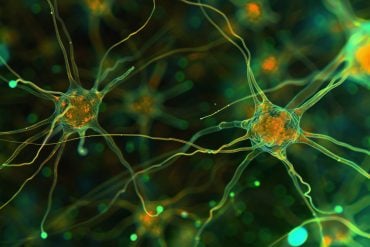Summary: FGF21, a hormone created in the liver in response to increased levels of sugar, acts in the brain to suppress sugar intake and controls the preference for sweet-tasting foods.
Source: University of Iowa
New research has identified the specific brain cells that control how much sugar you eat and how much you crave sweet tasting food.
Most people enjoy a sweet treat every now and then. But an unchecked “sweet tooth” can lead to overconsumption of sugary foods and chronic health issues like obesity and type 2 diabetes. Understanding the biological mechanisms that control sugar intake and preference for sweet taste could have important implications for managing and preventing these health problems.
The new study, led by Matthew Potthoff, PhD, associate professor of neuroscience and pharmacology in the University of Iowa Carver College of Medicine, and Matthew Gillum, PhD, at the University of Copenhagen in Denmark, focuses on actions of a hormone called fibroblast growth factor 21 (FGF21). This hormone is known to play a role in energy balance, body weight control, and insulin sensitivity.
“This is the first study that’s really identified where this hormone is acting in the brain and that has provided some very cool insights to how it’s regulating sugar intake,” says Potthoff, who also is a member of the Fraternal Order of Eagles Diabetes Research Center at the UI and the Iowa Neuroscience Institute.
Potthoff and his colleagues previously discovered that FGF21 is made in the liver in response to increased levels of sugar, and acts in the brain to suppress sugar intake and the preference for sweet taste.
Building on that finding, the team has now shown, for the first time, which brain cells respond to FGF21’s signals and how that interaction helps regulate sugar intake and sweet taste preference. The study, published in the journal Cell Metabolism, also reveals how the hormone mediates its effects.
Although it was known that FGF21 acted in the brain, identifying the exact cellular targets was complicated by the fact that the hormone’s receptor is expressed at very low levels and is therefore difficult to “see.” Using various techniques, the researchers were able to precisely identify which cells express the receptor for FGF21. By investigating these cells, the study shows that FGF21 targets glutamatergic neurons in the brain to lower sugar intake and sweet taste preference. The researchers also showed that FGF21’s action on specific neurons in the ventromedial hypothalamus reduce sugar intake by enhancing the neurons’ sensitivity to glucose.
Several drugs based on a modified form of FGF21 are already being tested as treatments for obesity and diabetes. The new findings could potentially lead to new drugs that more precisely target the different behaviors controlled by FGF21, which might help to control how much sugar a person eats.
In addition to Potthoff and Gillum, the team included UI researchers Sharon Jensen-Cody and Kyle Flippo, who were co-first authors of the study, Kristin Claflin, Yavuz Yavuz, Sarah Sapouckey, Grant Walters, Yuriy Usachev, and Deniz Atasoy.
Funding: The study was funded in part by grants from the National Institutes of Health, the American Heart Association, and the Veterans Affairs Merit Review Program.
About this psychology research article
Source:
University of Iowa
Media Contacts:
Jennifer Brown – University of Iowa
Image Source:
The image is credited to Matthew Potthoff, University of Iowa Carver College of Medicine.
Original Research: Closed access
“FGF21 Signals to Glutamatergic Neurons in the Ventromedial Hypothalamus to Suppress Carbohydrate Intake” by Matthew Potthoff et al. Cell Metabolism
Abstract
FGF21 Signals to Glutamatergic Neurons in the Ventromedial Hypothalamus to Suppress Carbohydrate Intake
Fibroblast growth factor 21 (FGF21) is an endocrine hormone produced by the liver that regulates nutrient and metabolic homeostasis. FGF21 production is increased in response to macronutrient imbalance and signals to the brain to suppress sugar intake and sweet-taste preference. However, the central targets mediating these effects have been unclear. Here, we identify FGF21 target cells in the hypothalamus and reveal that FGF21 signaling to glutamatergic neurons is both necessary and sufficient to mediate FGF21-induced sugar suppression and sweet-taste preference. Moreover, we show that FGF21 acts directly in the ventromedial hypothalamus (VMH) to specifically regulate sucrose intake, but not non-nutritive sweet-taste preference, body weight, or energy expenditure. Finally, our data demonstrate that FGF21 affects neuronal activity by increasing activation and excitability of neurons in the VMH. Thus, FGF21 signaling to glutamatergic neurons in the VMH is an important component of the neurocircuitry that functions to regulate sucrose intake.







